Main Takeaways:
- First-person indicates the author is writing about his/her feelings and/or point of view.
- First-person can be singular or plural and uses pronouns like I, me, and we.
- The second person addresses the person being spoken to.
- First-personPOV can be direct, using pronouns like you and your, or implied.
- Third-person POV refers to outside entities like objects or people other than the author or the reader.
The concept of the first, second, and third person can be confusing. Your professor may request an essay in the third person, and you’re trying to figure out who else is in the room beside you and her. First-person—is that like Neil Armstrong being the first human to step on the moon?
Kidding aside, finding the right point of view that serves both your topic and your purpose doesn’t have to be stressful. In this comprehensive guide, we’ll walk you through all three perspectives and even offer up examples. Get ready—you’re about to become an expert!
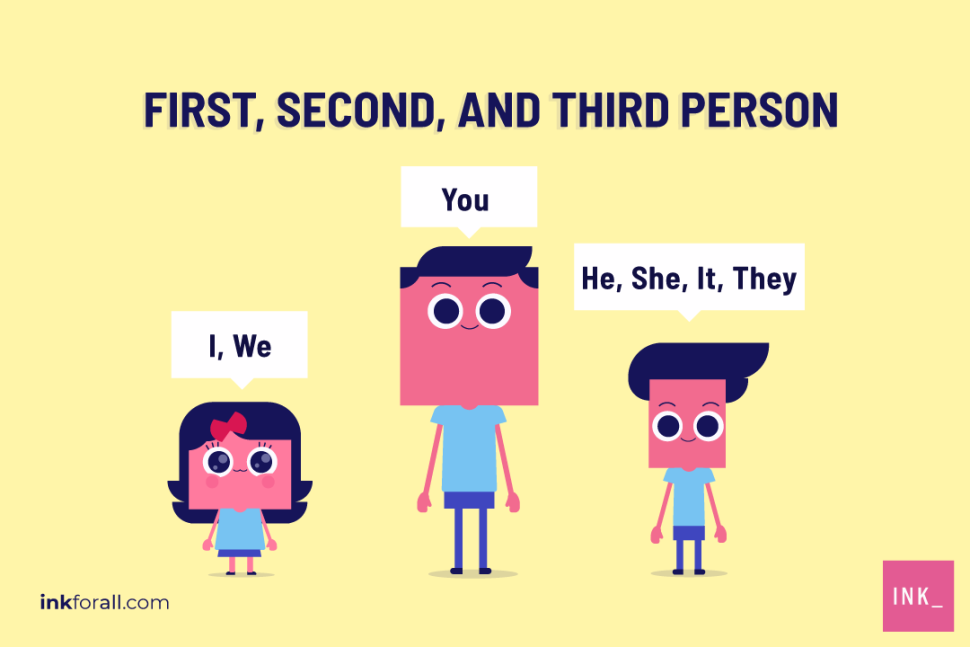

What are First, Second, and Third Person Points of View?
To begin with, a point of view refers to the perspective from which a piece of content is written. In writing, there are three types of points of view: the first, second, and third person. If you’re using the first person in your writing, it means that you’re the speaker. You narrate the story from your perspective. Now, if you’re using the second person POV, you are addressing your readers. Last but not least, the third-person perspective indicates that you are addressing the third party.
What is First Person?
Writing in first-person means you use pronouns that make it clear the text is about you. These may include “I,” “me,” and “my.”
First-person pronouns can also be plural and refer to several people. In that case, the speaker would be talking about the group as a plural first person. Plural first-person pronouns may include “we,” ‘us,” “our,” and “ourselves.”
Sometimes, authors turn to first-person narration as a way to draw in the reader and make a connection. It’s easier to identify with the protagonist of a novel, for example, when you read the dialogue in their voice. Understanding the star character’s perspective is important.
Need a trick to keep things straight? Remember this: You like to put yourself first. Therefore, “you” is first person!
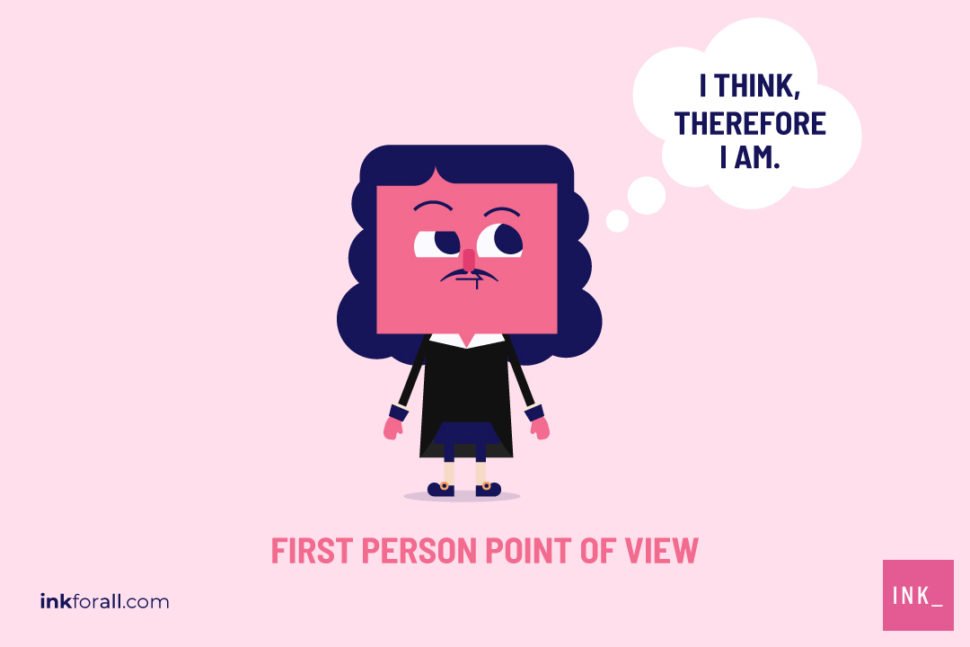

What is Second Person?
Second person addresses the person being spoken to, likely the reader. Though the second person can be used in fiction writing, it’s rare. It’s also uncommon to use the second person in scripts, as it’s considered breaking the fourth wall. You’ll most frequently see the second person used in direct communications, such as a letter or email. It’s also ideal for blogs, instructional guides, and other content that’s designed to compel the reader into action.
Second personpronouns can also be singular or plural and may include “you,” “your,” “yours,” “yourself,” and “yourselves.”
Youcan wait in the lobby untilyourroom is ready.
There is also a form of second person called impliedsecond person. The POV is implied because you’re talking to the reader without ever saying “you” or “your.”
What is Third Person?
Third person removes the reader and writer from the equation. Instead, the content refers to outside objects, people, or places. Think of it like transferring ownership of the text to the person or thing being talked about.
Third-person pronouns include “she,” “her,” “hers,” “her,” “his,” “it,” “its,” “they,” “them,” “their,” and “theirs.”
Much like the second person, a third-person perspective can be implied. You may not see pronouns like “them” or “him,” but it will be clear that the author is talking about a third party.
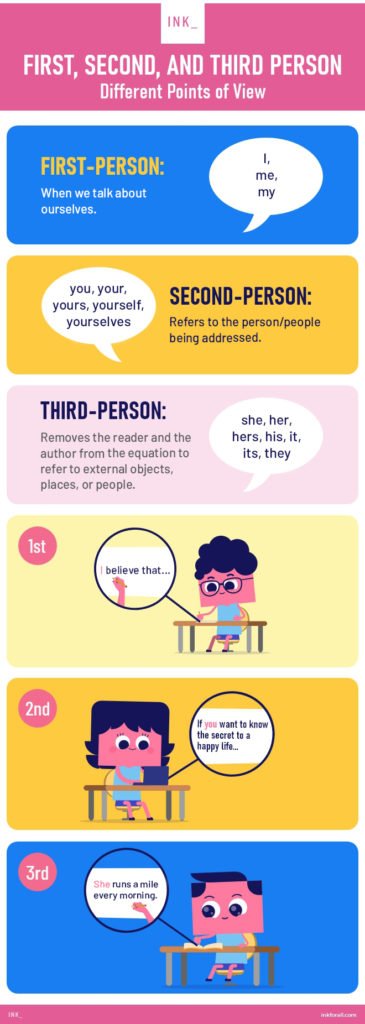

Third-person is the go-to choice for many fiction writers who want the ability to narrate their stories freely. With the third person, authors can describe a character’s emotions or inner dialogue without claiming it. In other words, they invite the reader in without involving them directly. It also comes across as being more objective. A narrator who uses “I” or “me” would likely be biased. Therefore, writing in the third person indicates the author has little to no personal stake in the story.
| Point of View | Singular | Plural |
| First Person | I, me, mine, my | we, us, our, ours |
| Second Person | you, your, yours | you, your, yours |
| Third Person | he, she, him, her, his, her, hers, it,its | they, them, their,theirs |
Think of who You’re Writing for
Most of the time, choosing between first, second, and third-person depends on what you’re writing and for whom. The one thing you want to avoid 99% of the time is speaking in the third person. If your name is Laura and you catch yourself saying, “Laura really needs some coffee,” prepare to be teased.
Quick Grammar Quiz on First, Second, and Third Person
First, Second, Third Person Question #1
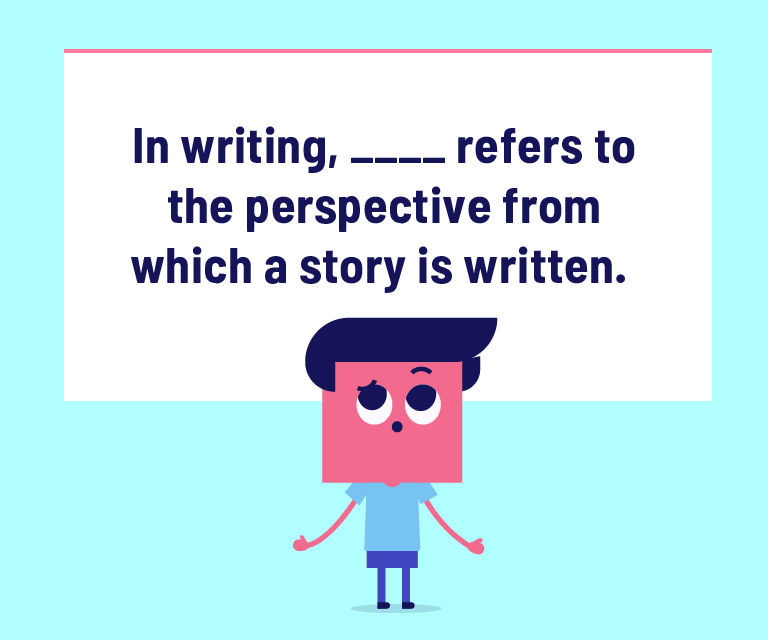

The answer is A. Point of view describes the perspective from which a piece of content is written.
Point of View Question #2
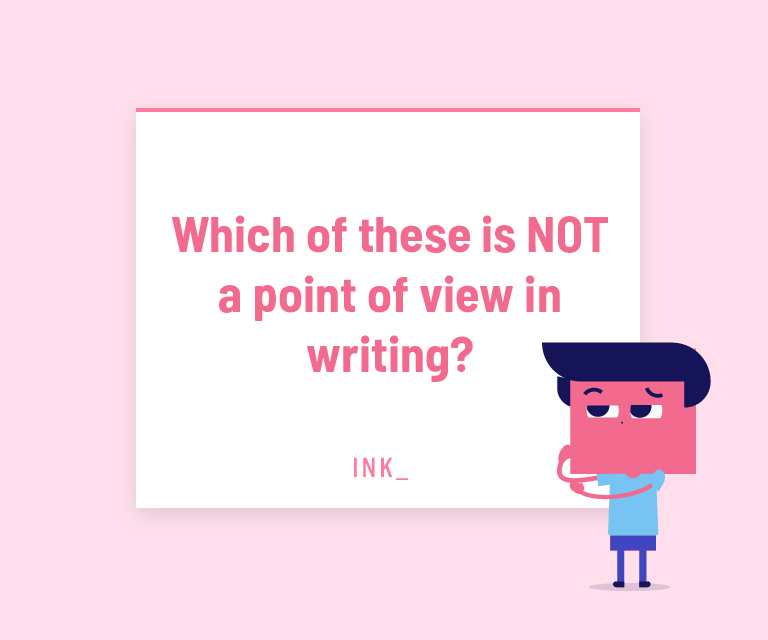

The answer is D. Fourth-person point of view doesn't exist.
First Person Question #3
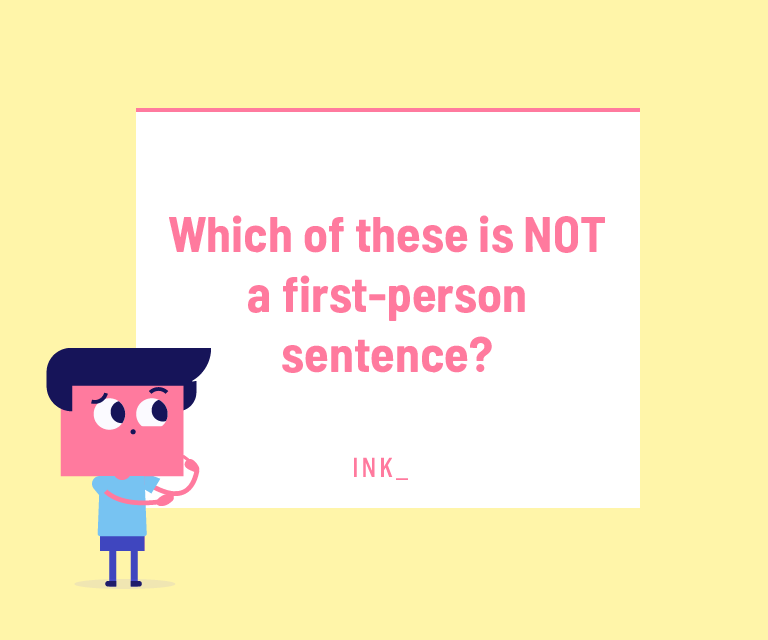

The answer is B. The sentence is written from a third-person point of view.
Third Person Question #4
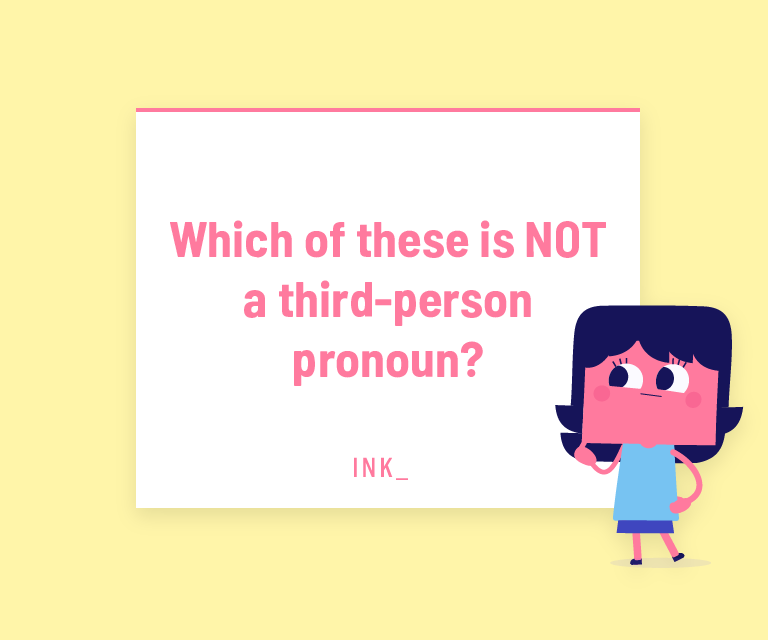

The answer is C. “You” is a second-person pronoun.
Third Person Question #5
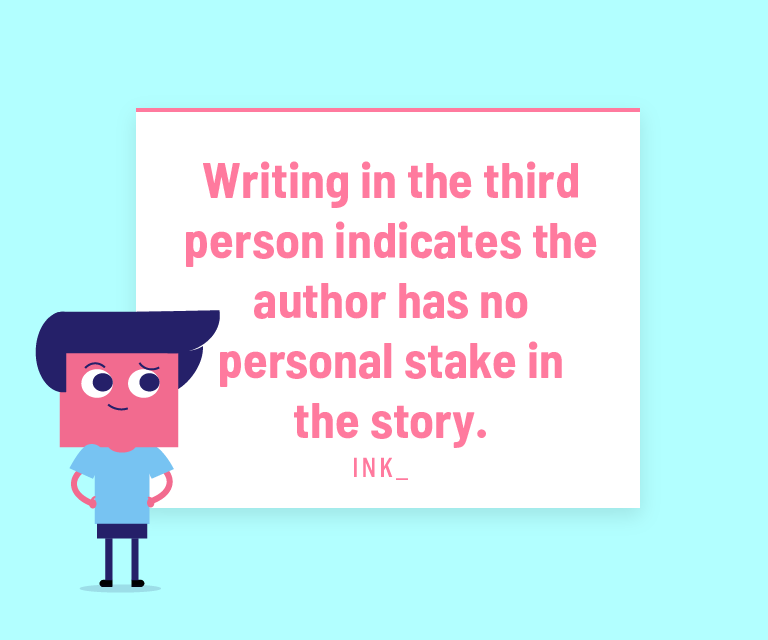

The answer is TRUE. Third-person point of view allows authors to describe a character's emotions or inner dialogue without claiming it.

This article has been extremely helpful thank you
We’re happy that you find our content useful!
Is there a way I can get a higher resolution copy of the graphics in this article? They are great to use for my students!
Hi, Heather! First, I’d like to thank you for being who you are and doing what you do. Teachers work so hard for their students, and we know remote learning has only presented new challenges. Teachers nurture entire generations of curiosity and creativity, and we’re absolutely touched you’d like to use our materials as part of this. We will certainly send high resolution copies to you via email. Thank you again!